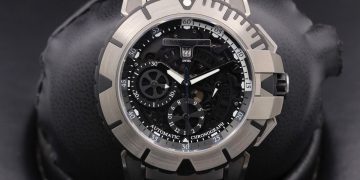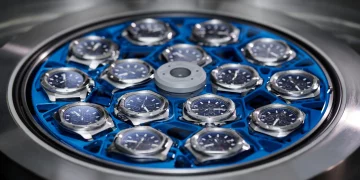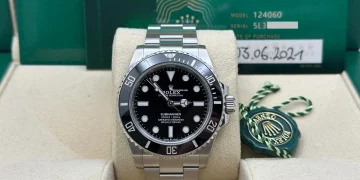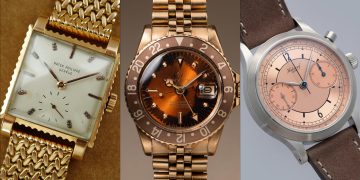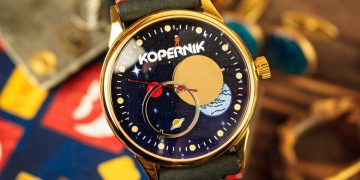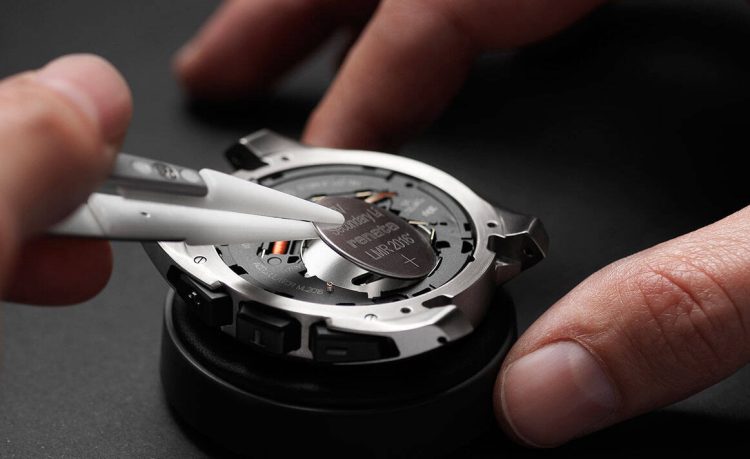Introduction
Luxury watches are more than just timekeeping devices; they are masterpieces of craftsmanship and symbols of elegance, success, and prestige. The meticulous craftsmanship involved in creating luxury watches is matched only by the care required to preserve them. Proper maintenance is essential not only for ensuring the watch’s functionality but also for extending its lifespan, preserving its value, and keeping its aesthetic appeal intact.
This article explores the key steps involved in maintaining luxury watches, ranging from basic daily care to in-depth servicing and storage techniques. By following these tips, collectors and owners of luxury timepieces can keep their watches in pristine condition for generations to come.
1. Understanding the Components of a Luxury Watch
Before delving into maintenance practices, it’s important to understand what makes luxury watches unique in terms of components, movements, and materials.
1.1 Key Components of Luxury Watches
Luxury watches are made up of a variety of intricate components that work together to keep time accurately. These include the movement, dial, hands, case, crown, and bracelet. Each of these parts requires specific care to maintain their longevity and function.
- Movement: The most important part of any watch, the movement contains hundreds of tiny, delicate components, which need regular maintenance to avoid malfunctions.
- Case: Typically made from metals like stainless steel, gold, or titanium, the case needs to be kept free from scratches and dents to maintain the watch’s aesthetic appeal.
- Bracelet: Whether made from metal or leather, the bracelet requires care to ensure it doesn’t wear out prematurely or lose its finish.
1.2 The Importance of Materials in Luxury Watches
Luxury watches often feature high-end materials, such as sapphire crystal, ceramic, and precious metals, each of which requires specialized care.
- Sapphire Crystal: Resistant to scratches, sapphire crystal is commonly used for watch faces. However, it can still crack under extreme pressure or impact, so owners must take care to avoid rough handling.
- Leather Straps: Leather is a classic material used in many luxury timepieces, but it is susceptible to wear and tear from exposure to sweat, moisture, and sunlight. Proper care is required to preserve its softness and avoid cracking.
- Precious Metals: Gold, platinum, and stainless steel cases may need regular polishing to retain their shine. Each of these metals has different care requirements, such as avoiding exposure to harsh chemicals or perfumes.
2. Daily Care for Your Luxury Watch
Proper daily care is the foundation of watch maintenance. With routine attention, owners can minimize the need for major repairs down the line.
2.1 Winding and Setting the Time
Mechanical and automatic watches require proper winding and time setting to keep them running smoothly.
- Manual Watches: These watches require manual winding every day or every other day, depending on the movement’s power reserve. Over-winding can damage the movement, so it is important to stop when the crown resists further turning.
- Automatic Watches: Automatic watches wind themselves as the wearer moves. If the watch has not been worn for an extended period, it may need manual winding before use.
2.2 Avoiding Sudden Temperature Changes
Luxury watches, particularly mechanical ones, are sensitive to temperature fluctuations. Extreme cold or heat can affect the lubricants inside the movement, which may cause the watch to lose accuracy or even stop working.
- Tip: Try to avoid wearing your watch in environments with drastic temperature changes, such as saunas or hot tubs, and store it in a cool, dry place.
2.3 Protecting the Watch from Moisture
Even watches that are water-resistant can be damaged by water if their seals are compromised. It’s essential to avoid exposing luxury watches to moisture, especially in activities such as swimming or showering.
- Water Resistance: Check the water resistance rating of your watch, and be mindful of the depth and pressure it can withstand. Over time, the gaskets and seals may wear out, reducing the water resistance, so it’s essential to have them replaced during servicing.
3. Cleaning Your Luxury Watch
Cleaning your luxury watch helps to maintain its appearance and functionality. However, improper cleaning can cause scratches or damage delicate components. Here’s a breakdown of how to clean the different parts of your luxury watch.
3.1 Cleaning the Watch Case
- Step 1: Use a microfiber cloth to gently wipe the case and remove dust and fingerprints. For stainless steel, you can use a soft cloth with a small amount of water.
- Step 2: If there are stubborn marks or grime, use a mild soap solution with lukewarm water. Gently clean the case with a soft toothbrush, then wipe it dry with a clean, soft cloth.
3.2 Cleaning the Watch Strap
- Metal Straps: A stainless steel or metal strap can be cleaned with a microfiber cloth, or you can use a soapy solution with lukewarm water to clean the links.
- Leather Straps: Leather requires special care. Avoid using water, as it can cause the leather to crack. Instead, use a leather-specific cleaner or a mild soap solution, then apply a leather conditioner to keep the strap supple.
- Rubber Straps: These can typically be cleaned using a mild soapy solution and a soft brush.
3.3 Cleaning the Crystal
Sapphire crystals are highly resistant to scratches, but they can still accumulate dust and smudges. Use a microfiber cloth to clean the crystal, and avoid using harsh chemicals that could damage the coating or cause scratches.
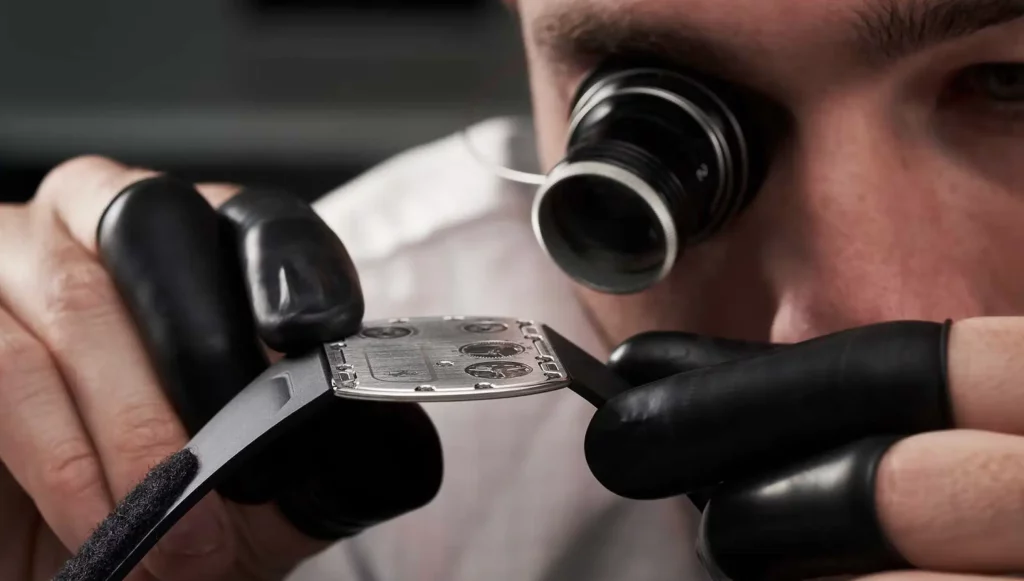
4. Storage and Protection
Proper storage is just as important as regular cleaning and winding. Where and how you store your luxury watch can greatly impact its longevity.
4.1 Using a Watch Winder
If you own a mechanical or automatic watch, using a watch winder is a good idea. A watch winder mimics the movement of the wrist, keeping the watch wound when not in use. This helps to maintain the watch’s accuracy and prevents the movement from stopping.
4.2 Storing in a Dry, Cool Environment
Watches should be stored in a cool, dry place to avoid exposure to moisture, extreme temperatures, or humidity. Use a watch box or a special case to keep the watch protected from dust and physical damage.
4.3 Avoiding Magnetic Fields
Watches, especially mechanical models, can be affected by magnetic fields. Magnets can disrupt the movement’s accuracy, causing it to gain or lose time. Keep your watch away from sources of magnetic fields such as electronic devices, speakers, and strong magnets.
5. Servicing Your Luxury Watch
Regular servicing is critical to the performance and longevity of any luxury watch. Luxury watch manufacturers typically recommend servicing every 3 to 5 years, depending on the brand and type of movement.
5.1 Why Servicing is Important
Over time, the lubricants in the movement can degrade, which can cause the movement to lose accuracy or even damage the internal components. Regular servicing ensures that the movement is cleaned, lubricated, and any worn-out parts are replaced.
5.2 What Happens During a Watch Service?
During a full service, the watch is disassembled, cleaned, lubricated, and reassembled. The movement is checked for accuracy, and any worn or damaged parts are replaced. The case and bracelet may also be polished, and seals may be replaced to ensure water resistance.
- Tip: Always have your watch serviced by authorized service centers or trained watchmakers to ensure the quality and integrity of the timepiece.
5.3 Keeping Track of Service Dates
It’s important to keep a record of when your watch was last serviced. This will help you stay on top of future servicing dates and ensure the watch is always in optimal condition.
6. Common Mistakes to Avoid
To ensure the longevity of your luxury watch, there are certain mistakes that should be avoided:
6.1 Over-Winding the Watch
While winding is essential for manual watches, over-winding can cause strain on the movement. Always stop winding when you feel resistance.
6.2 Using Harsh Chemicals or Cleaning Products
Avoid using harsh chemicals or abrasive materials to clean your watch, as these can damage the surface and finish. Stick to microfiber cloths and mild, watch-specific cleaning solutions.
6.3 Neglecting Regular Maintenance
Skipping regular maintenance can lead to bigger problems down the road. The lack of lubrication and wear on parts can affect the accuracy and functionality of the movement.
6.4 Storing in Direct Sunlight or Humid Areas
Direct sunlight can cause the dial and strap to fade over time, while humid environments can lead to moisture build-up inside the watch. Store watches in cool, dry, and dark places to avoid these issues.
Conclusion
Luxury watches are not just accessories; they are investments that reflect craftsmanship, history, and precision. Proper maintenance is essential to ensure that these timepieces continue to perform at their best and retain their value for years to come. By following the appropriate steps for daily care, cleaning, storage, and servicing, owners can extend the lifespan of their luxury watches, allowing future generations to appreciate these beautiful pieces of horological art.
Whether you’re a seasoned watch collector or a newcomer to the world of luxury timepieces, understanding and applying the principles of watch care will help you preserve the beauty and functionality of your watch for years to come.



